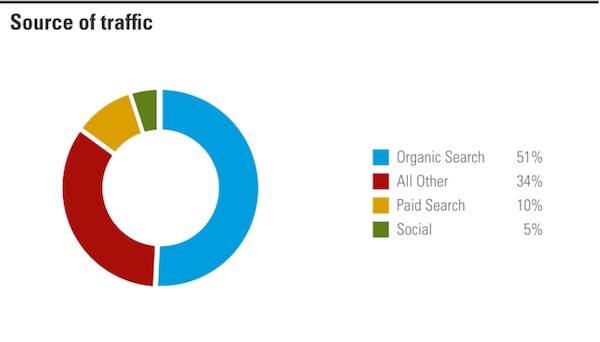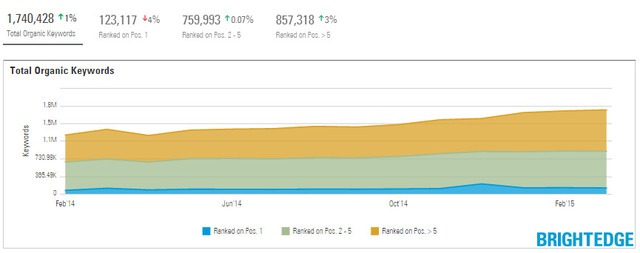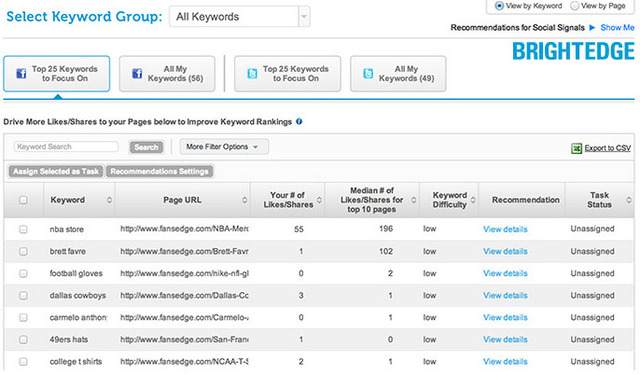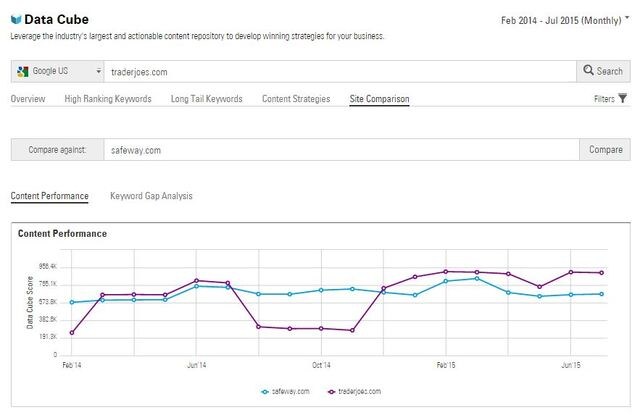Year-End Budget Strategy
Everyone who sells faces the “I-have-no-budget” objection, and as we get to the end of the calendar and fiscal years we sometimes take the easy way out and start asking about how we can get in the consideration cycle for the following year. But in between this year and next year is a little window of budget that can emerge as actuals come in. The use-it-or-lose-it budgeting policies affect government buyers the most with research showing a five time increase in expenditure in the final week of the fiscal year vs an average weekly expenditure. Because of the compressed time schedule, purchases face less scrutiny at year end than in other parts of the year.
The end of the year is an important time for B2B companies and their budget strategy. It is common for businesses to experience a decrease in traffic and conversions during this time with the holidays and budgetary issues slowing spending. B2B companies looking to capture the leftover budget from their clients, however, may find success with online marketing and effective sales follow-through. Because it is less busy in many offices as the holidays and end of year approach, it can be a good time to work around your budget strategy and engage your prospects, but you have to start a few months ahead to identify your opportunities, build content, build pipeline, and advance your prospects on the customer journey to purchase.
Content development and online marketing are becoming increasingly important in the world of B2B marketing. Although many people associate online marketing with B2C, in the United States B2B e-commerce is already twice as large as B2C e-commerce and it is predicted that B2B sales will reach $780 billion by the end of 2015. This will be 9.3 percent of all B2B sales. It is also worth noting that as many as 67 percent of B2B buyers rely more on content for their research and guidance on their purchasing decisions than they did a year ago. Despite these numbers, nearly 60 percent of B2B marketers do not consider their marketing campaigns to be successful, particularly when it comes to demand generation. Fortunately, as we prepare to head into the close of 2015, there is still a little time left to ramp up your online marketing efforts and finish capturing new prospect and customers to include in your budget strategy. Here are some key ways to figure out your year-end budget strategy:
- Mine keyword data for end-of-year spikes and opportunities
- Know your competitors' strengths and weaknesses in key content areas
- Increase conversions by optimizing your landing pages to make it easy to find contact information
- Incorporate the search, social, and content trifecta
- Prepare for mobile
- Perpetually monitor with a platform that gives you the full picture
1. Mine keyword data for end-of-year spikes and opportunities. Data we have collected at BrightEdge indicates that an estimated 51 percent of traffic originates from organic sources. The majority of your site visitors find your page because they clicked on a page in the SERP and it took them to your site. Ranking well is critical to the success of B2B online marketing.

The BrightEdge Data Cube empowers you with key insights into the topics and keywords that your audience desires. You will have access to information gathered from millions of different websites, allowing you to pinpoint the exact areas where you can attract the attention of your customers and bring them back to your website.

You can use this information to begin identifying a targeted keyword list that will guide your content creation and keyword usage. By leveraging industry-leading technology, you can track what people are paying attention to throughout the last months of the year and the impact that your content is having on those visitors.
2. Know your competitors' strengths and weaknesses in key content areas. When it comes to ranking well on SERPs, you not only need the quality content and the keywords that match what your customers seek, you also have to outrank your competitors. You want to know where your competitors are performing well and where their campaigns are the weakest. Information about the keywords and content types that are resulting in the most leads and conversions can give you insight into where your marketing needs to position your brand. Analysis of your competitors’ weaknesses can also provide you with fertile ground upon which you can capitalize and draw out new segments of your customer base. Use this information to help refine your targeted keyword list, such as by prioritizing untapped profitable terms. The BrightEdge Data Cube and platform can also be a valuable resource when it comes to accomplishing these goals. You can monitor the sites of your competitors and get insights about their traffic and the keywords for which they rank well. You can run analyses that allow you to measure your progress against your competitors’ pages and gain greater understanding of how to maximize your exposure.

3. Increase conversions by optimizing your landing pages to make it easy to find contact information. The importance of content for a B2B online marketing plan cannot be underestimated. An estimated 64 percent of B2B technology buyers say that they read between 2 and 5 pieces of content before they make a purchase. Business customers want to have content available to help them understand the value of your products and services. This content should be developed based upon the targeted keyword list you created earlier. Compelling content will result in a client-centric experience throughout the site. That includes writing product descriptions and using language and adjectives that appeal strongly to your intended audience. In addition to creating engaging, informative content, you also need to optimize your landing page to bring people down the sales funnel. Keep in mind also the information that B2B customers want to see an appropriate amount of content and details about your company and customers on your website. For example, 53 percent of people in a KoMarketing/Huff Industrial Marketing survey said that Thorough Contact Information was necessary to establish vendor credibility. At the same time, 51 percent of survey respondents indicated that contact information is precisely what is missing on most websites. Following contact information, the next most important website feature was an About Page and Team Bios.
4. Incorporate the search, social, and content trifecta. Search, social and content are intimately connected online. Strong content always forms the backbone - the rest of a campaign will fall apart if it is not supported by a content that matches the reader’s needs with well-formed copy that is easy to digest. To help that content succeed on search, however, you need to also leverage the power of social media. Google has said that they do not directly measure social signals, such as likes or shares, as a part of their algorithm. They do, however, measure traffic and backlinks, both of which social media will be useful at providing. When you have well-written content that meets the needs of customers and promote it through social media, it will naturally bump your traffic rate and can also increase your backlinks. Social media is particularly important when it comes to online commerce. When your content helps to increase your brand reach, you in turn increase the chance of engaging with readers across social media. Forty percent of B2B buyers say that LinkedIn is a valuable resource for researching technology and services they might want to buy. Forty five percent of B2B marketers say that they have generated leads through LinkedIn and another 39 percent say they have found leads through Facebook. Maximizing your use of social, however, requires careful considerations about the types of content and the topics you write about. Tools like Social SEO Recommendations can help you follow social trends and publish content that will capture people’s attention about their favorite subjects. This will help to amplify your social efforts and get your message in front of more members of your intended audience.

5. Prepare for mobile. As of April 2015, more Google searches have begun to take place on mobile devices rather than computers in 10 different countries, including major consumers like the United States and Japan. At BrightEdge, our own research has also indicated that customers are buying both large and small items on mobile devices, so mobile e-commerce matters even more now. Over the course of the first three quarters of 2014, we found that the average order size was within a 10 percent range between mobile and desktop. Given the willingness of customers to buy items of all sizes on mobile, you need to make sure your B2B site is ready to meet the need. Mobile is also a prominent factor in the use of social media. Forty percent of cell phone owners say that they use social media sites on their phones, with 28 percent they do so on a typical day. Given the importance of social media in securing leads for B2B marketers, it makes sense that having a mobile friendly site that can be easily accessed will help enhance any end-of-the-year online campaign. Mobile friendly sites should include responsive web design to ensure that the site fits easily on the smaller screen. The site should also be easy to use with a touch screen and the needs of mobile customers - such as phone numbers and addresses - should also be easily found on mobile site versions. Avoid major mobile errors by reviewing Google’s mobile recommendations to make sure your site is ready to go.
6. Perpetually monitor with a platform that gives you the full picture. As you begin to implement your plan for the end of the year marketing season, you want to make sure that the platform you use can show you the entire picture. You need to be able to see how you and your competitors are performing in real time throughout the last few months. Watch how your keywords are performing, where you are weakest and determine what you need to do to improve. As new keywords and content trends begin to form on social media, make sure that you are ready to produce and publish content that fits these needs to help expand the reach of your brand and the power of your content marketing campaign. BrightEdge is here to provide these service and more. With industry leading technology, you can dive into the data that will help drive your business forward. It will help you not only take preventive steps to avoid unnecessary drops in revenue during this important season, but actually thrive throughout this period. The end of the year is a critical time for B2B brands. It is the time to finish the year on a strong note and prepare to enter the new year in the black. Position yourself wisely, plan, develop content, deploy, and keep reaching out, so you will be equipped to capture the leftover year-end budget and contribute efforts toward your budget strategy from your prospects. Increase your online marketing leverage now to make it happen at year end.


